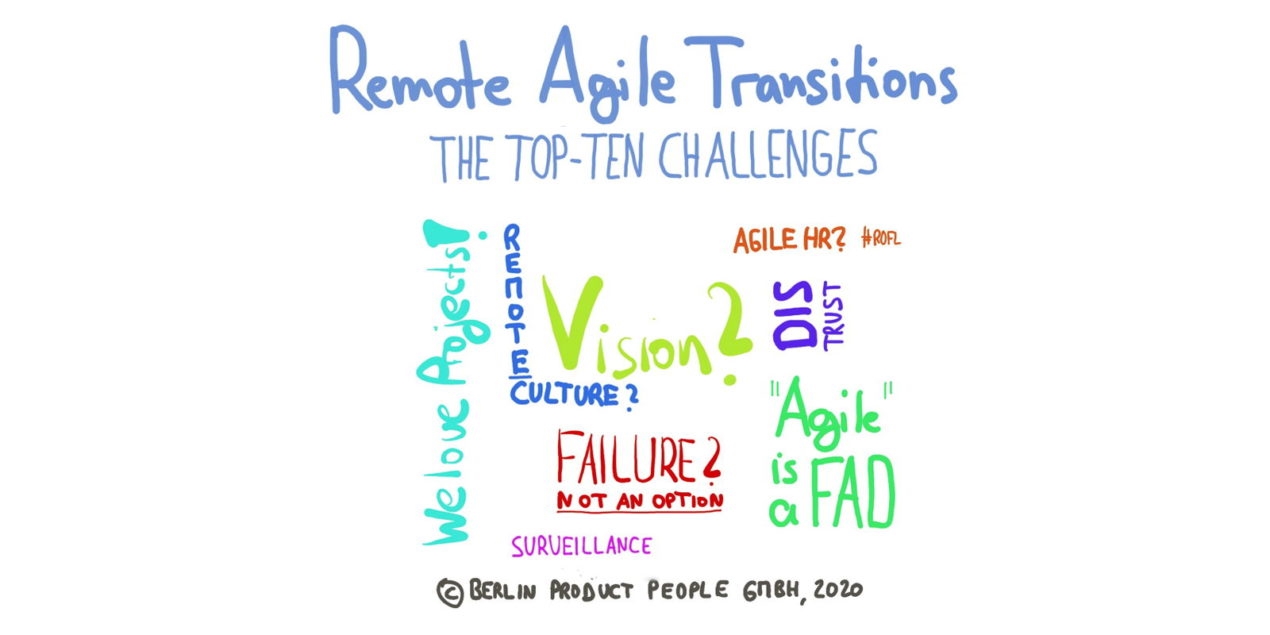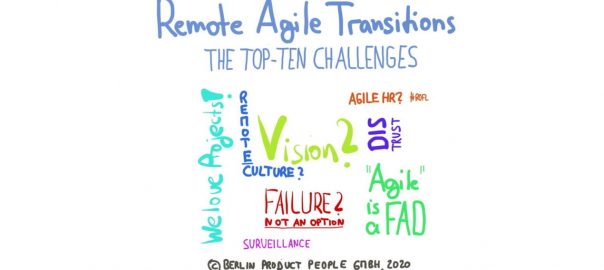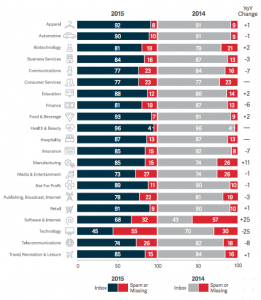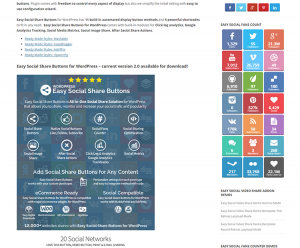TL; DR: Remote Agile Transitions
We are used to saying the Scrum is a perfect probe for organizations, as it will reliably discover all dysfunctionalities. Since the pandemic has forced many of us to work remotely, this unique capability has been kicked into overdrive regarding remote agile transitions.
Here are my top-10 challenges of organizational change that remote Agile has made more urgent to address than ever before.

Why Remote Agile Accelerates Change
Three months into working with distributed teams, at least for the majority of us who are not working for one of the remote work pioneers like Automatic, Gitlab, or Buffer, operational issues at a tactical level have been addressed. Zoom has fixed many of the problems reported, we learned how to organize engaging remote events, and more people start embracing techniques like Liberating Structures or Training from the Back of the Room to get all sorts of work done. With a good outcome, as it seems that remote work improves productivity, at least when team members are engaged with their work.
Now that the dust is beginning to settle, I believe it is the right time to switch from survival mode with a focus on keeping operations running back to a more strategic way of handling change to become an agile organization. Here are my top-10 challenges that remote Agile transitions are facing:
- A lack of a vision: Why is the organization pursuing to become agile? What are we fighting for—is it really about learning faster than the competition? If an organization is not transparent about vision and strategy, teams will find it significantly more challenging to become self-organizing and accept responsibility. (Or let us put it in a different way, Alice-in-Wonderland style: “If you don’t know where you are going, any road will get you there.”)
- Ignoring the trend: The organization’s middle management, as well as individuals, do not embrace an agile mindset or abandon it quietly, believing ‘Agile’ is a pandemic-related management fad—like distributed teams and remote work—that will go away sooner or later. (Well, I think that Agile is a massive trend, not a mere fad. And remote work is here to stay, too.)
- Clinging to projects: My budget, my feature: The organization tries to become agile without switching from a project-based to a product-based development approach. The process continues to be ruled by (annual) budgets, and risk-mitigation by committee is still the norm, becoming even more counter-productive during a remote agile transition.
- Culture I: No failure culture: In moments of crisis and uncertainty, organizations and individuals tend to focus on short-term results. If your professional future depends on appearing useful, staying in your comfort zones becomes an incentive as it pays to play safe. However, shouldn’t rapid learning and being innovative now be the name of the game to preserve the organization’s future? (Failure is an inevitable part of that approach. During a remote agile transition, leaving the comfort zone, taking an acceptable risk should be rewarded instead.)
- Culture II: The culture is lagging behind developments: The organization is not doubling down on transferring or preserving its culture in a remote agile environment. My favorite definition of company culture goes as follows: Culture is what happens when you are not looking. Now apply this model to a situation where there are no watercoolers and coffee machines that can act as waterholes for the tribe, and where having lunch is not an option. (Going remote requires more effort to cultivate your organization’s culture, particularly at the leadership level.)
- Distrust meets a bias for action: A perceived loss of control at the management level accompanied by a bias for action both lead to doubling down on old-school Tayloristic micro-management during a remote agile transition. The management abandons self-organization the moment it is needed the most due to the complexity of the situation and resulting uncertainty. It also still believes in its traditional role: telling people what to do, how to do things, and making sure everyone is busy at all times. (A thoughtful dealing with the new situation requires investing more in trusting people, their willingness to accept responsibility voluntarily, and self-organization.)
- Surveillance: Trust won’t be built by surveilling and micro-managing team members. Therefore, don’t go rogue; the prime directive rules more than ever in a remote agile setup. Trust in people and do not spy on them — no matter how tempting it might be. (Read more about the damaging effect of a downward spiraling trust dynamic from Esther Derby.)
- A slow convoy of organizational silos: The organization moves at the speed of the slowest to change functional silo. Pre-pandemic, it has not pursued efforts to establish a rapid build-test-learn culture, and thus departments are moving at different speed levels. (In a remote Agile world, the resulting friction is steadily increasing, probably to a breaking point.)
- Team-building issues and agile HR: In a market where skilled people are made redundant, the people folks move back to defending the organization from the individual worker instead of focusing on supporting the transition to a team of teams by actively involving team members in solving personnel issues. (There are plenty of dark patterns of this kind, for example, moving people among teams upon short notice. Or, not staffing teams adequately, for example, leaving Scrum Master positions open or make working Scrum Masters redundant. Open positions are not filled, and teams are kept too small and hence not cross-functional and, therefore, not self-organizing. Or they do not involve teams in the recruiting process itself.)
- No training and tech is your problem: The organization is not actively training team members in the technology, software, and practices that the distributed team relies on. To make matters worse, the organization does not provide support with technology or connectivity in the home-office. (Don’t assume that people know how to use the technology and software involved or have an adequate Internet connection. Therefore, offer regular training classes to signal that not knowing how remote agile collaboration works can be resolved and provide any support necessary to get home-offices up to the standards. Failing in this respect at an organizational level qualifies for the category of penny-wise and pound-foolish.)
Conclusions
The added complexity, the increased uncertainty caused by this pandemic make working with cross-functional, self-organized teams in a decentralized fashion — collaborating as a team of teams — more valuable than ever. Now is the time to double down on becoming agile to reap the benefits of business agility: overtaking the competition while creating value for our customers; don’t regress to the practices from the 1920ies if you want your remote agile transition to be successful.
What is your take on the notion that remote work and uncertainty are accelerating agile transitions? Please share it with us in the comments.
Business & Finance Articles on Business 2 Community
(62)









